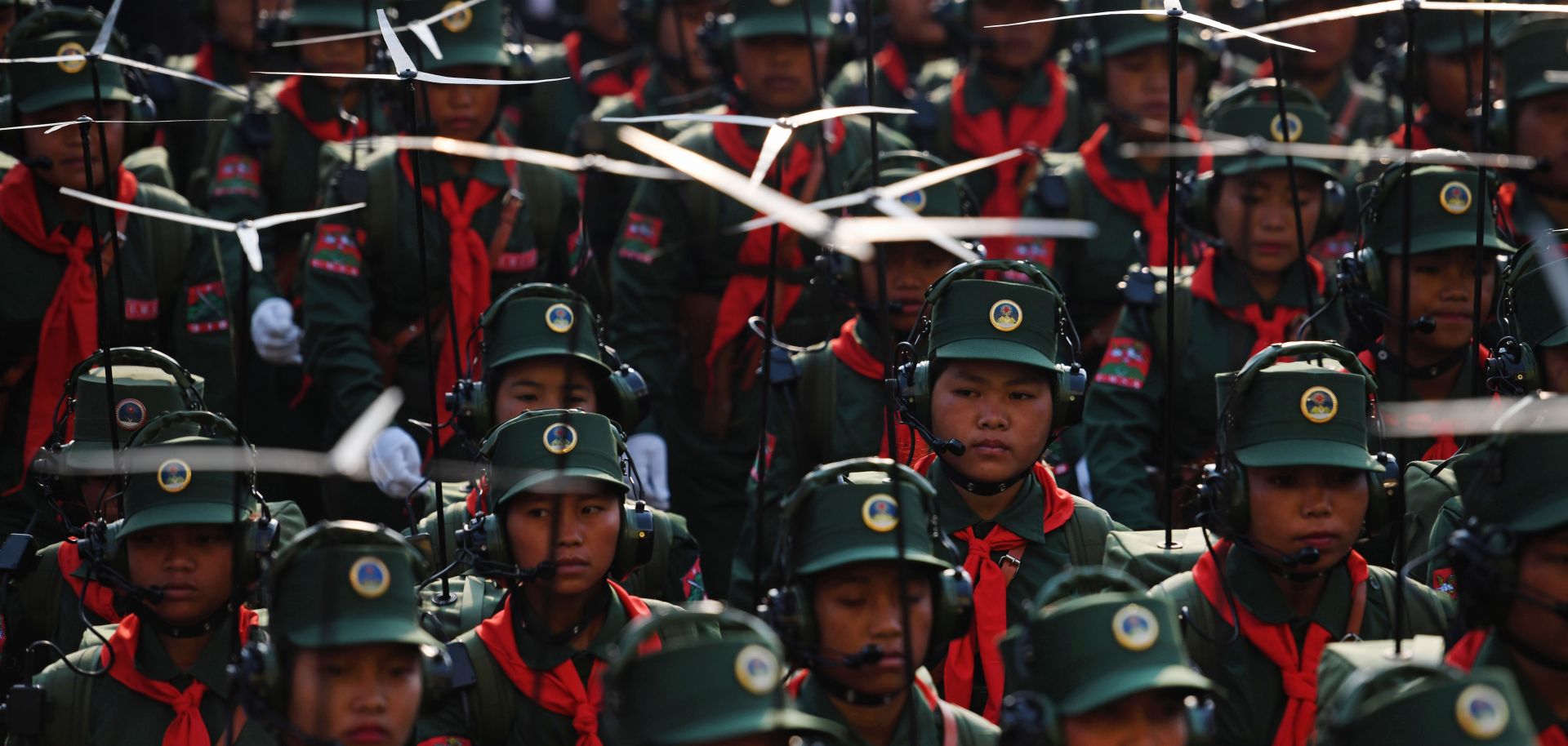
New information from Myanmar suggests increasing military ties between China and Myanmar's largest ethnic insurgency, the United Wa State Army. The Chinese government will provide "aviation training" for 30 UWSA militants in China, according to an Irrawaddy newspaper source. This follows an IHS Jane's report from April 2013 that said China sent Mil Mi-17 helicopters to the UWSA. If true, this could suggest a beefing up of UWSA military capabilities and a renewal of Beijing's push to establish an ethnic buffer against Myanmar. Naypyidaw is trying to control its numerous ethnic insurgencies and the UWSA wants to use Chinese support as leverage for continued concessions.
Based in Myanmar's northeastern Shan state, the ethnic Wa fighters who comprise the UWSA were the rank-and-file of the Chinese proxy insurgent group the Communist Party of Burma. Following that group's collapse in 1989, the Wa formed the UWSA and signed a cease-fire with Naypyidaw, giving them autonomy and room to expand their business and smuggling operations. Today, the 30,000-strong UWSA is the strongest insurgent group in Myanmar and controls two zones: a Northern Command on the Chinese border and a Southern Command on the Thai border. The UWSA's possession of Chinese helicopters would enable the Wa to deter potential military offensives and the UWSA to overcome the geographical separation between its holdings.
But helicopters require continued maintenance, fuel and spare parts — all dependent on transportation through 1,200- to 1,500-meter (4,000- to 5,000-foot) mountains covered in jungle. This terrain seems impassible, but an analysis of Chinese connectivity across the border into UWSA territory reveals that it would be possible to run the logistics train needed. Roads paved by the Chinese run through valleys and along ridge lines toward the Myanmar border, and from there, semi-improved dirt roads cut through Myanmar's jungle to UWSA encampments and villages. Except during the wet season (from May to October), there are no serious constraints to the movement of large volumes of fuel and spare parts from China to bolster the UWSA's military capabilities.



